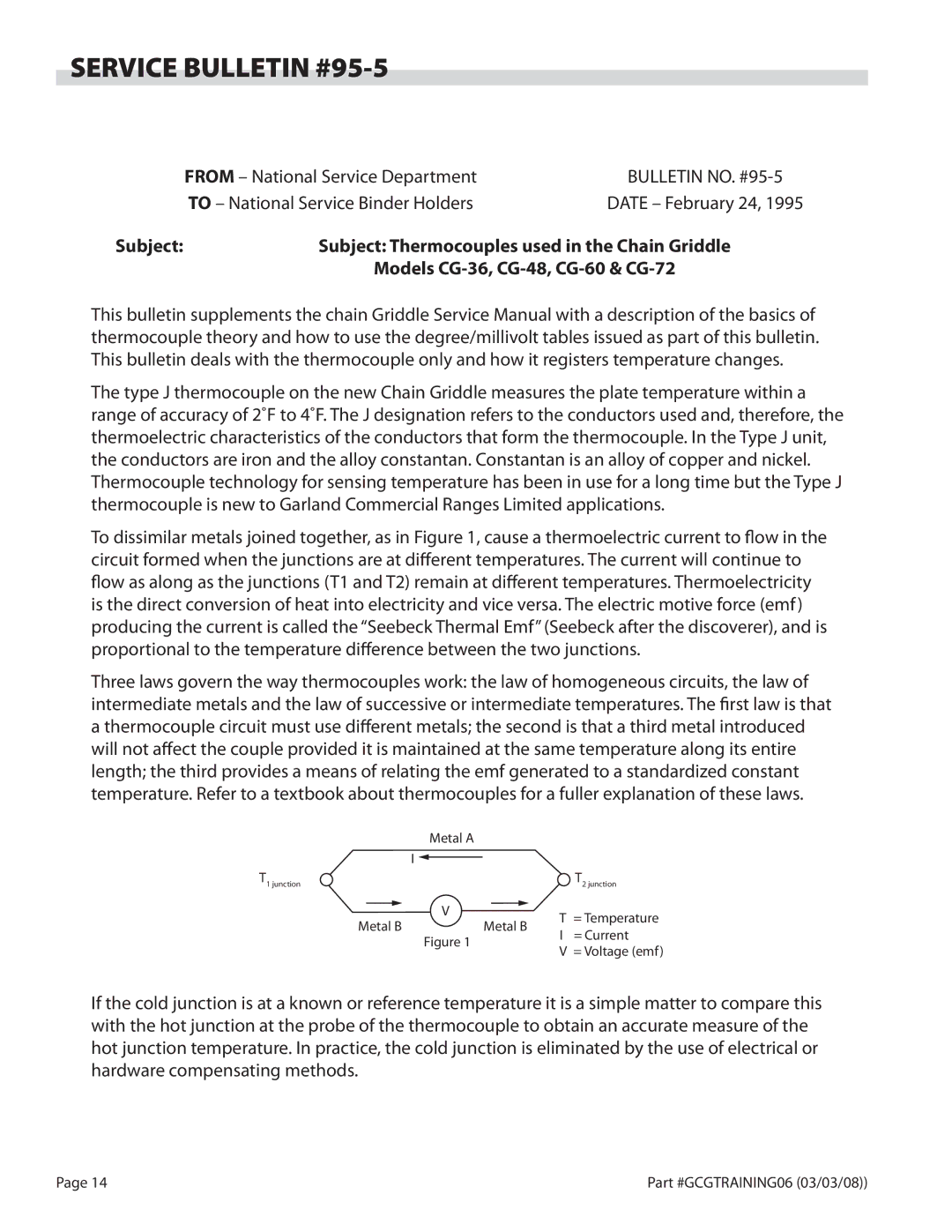CG-60, CG-72, CG-48, CG-36, CG-24 specifications
The Garland CG series is renowned for its dependable and innovative design, catering to diverse needs in commercial kitchens. The series includes models CG-24, CG-72, CG-48, CG-60, and CG-36, each with unique features that make them suitable for various culinary tasks.Starting with the CG-24, this compact unit is designed for restaurants with limited space but a high demand for efficiency. The CG-24 offers a single deck oven with a capability to yield remarkable results without compromising on quality. Its adjustable temperature settings allow for precision cooking, while the stainless steel exterior ensures durability and easy maintenance. The commercial-grade heating elements provide consistent heat distribution, making it ideal for baking and roasting.
Next is the CG-72, a larger model designed for high-volume operations. The CG-72 boasts a double-deck construction, allowing chefs to prepare multiple dishes simultaneously. Its advanced convection technology circulates hot air evenly throughout the oven, enhancing cooking efficiency. This model also features programmable digital controls, giving chefs the ability to save and replicate cooking profiles with ease, ensuring consistency across multiple dishes.
The CG-48 is tailored for versatility, featuring multiple cooking options that include baking, broiling, and warming. Its spacious interior can accommodate various tray sizes, making it a favorite amongst bakers and caterers. With user-friendly controls and high-performance heating systems, the CG-48 ensures that food is cooked to perfection every time. Additionally, its efficient energy usage makes it a cost-effective choice for businesses seeking to reduce operating expenses.
Moving on to the CG-60, this model integrates cutting-edge technologies to enhance sanitation and ease of use. The CG-60’s self-cleaning feature significantly reduces labor and time spent on maintenance, while its robust construction ensures longevity under heavy use. The digital interface allows for precise control over cooking times and temperatures, making it a reliable partner in busy kitchen environments.
Finally, the CG-36 offers a balance of size and power, making it ideal for medium-sized operations. Its range of cooking options alongside efficient heat distribution makes it a versatile choice for chefs. The compact design does not sacrifice performance, ensuring that even small footprints can accommodate high culinary output.
In summary, the Garland CG series combines advanced technology with practical design, ensuring that each model—CG-24, CG-72, CG-48, CG-60, and CG-36—meets the diverse needs of commercial kitchens, delivering exceptional performance, durability, and user-friendly operation.

